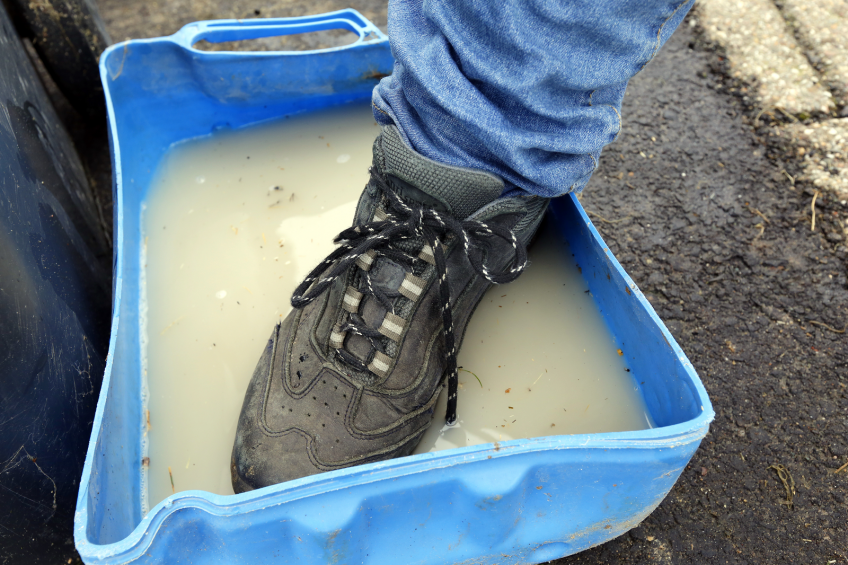Poultry farm foot dips frequently ineffective

Poultry producers are being urged to review the way they manage boot dips, following recent research which shows that their use on farms is frequently ineffective.
The study was conducted by the department of bacteriology at the Animal and Plant Health Agency (APHA) in the UK in order to assess the anti-salmonella activity of boot dips on poultry farms.
Pathogens present a significant risk
“The introduction of pathogens from the external environment into poultry houses via the boots of farmworkers and visitors presents a significant risk,” say the report’s authors in the abstract. “But the effectiveness of these boot dips as a preventative measure can vary.”
To assess this, the scientists collected 112 boot dip samples from commercial layer farms and tested them for their activity against Salmonella enteritidis. Depending on the test model used, effectiveness ranged from 37% of the dips tested, to 86%.
The study pointed to a number of factors influencing efficacy, including the dilution used, the presence and amount of organic matter in the dip, temperature, the presence of biofilms and the contact time. “Dips may not be changed regularly or may have been exposed to rain and other environmental elements,” the report adds.
Salmonella enteritidis is a re-emerging threat
The APHA, in its quarterly report on avian diseases, refers to Salmonella enteritidis as “a re-emerging threat”. It says the study “reinforces the need for veterinarians and industry to remind producers on how best to use and manage boot dips as a means of pathogen control.”
* The report “Assessment of the anti-salmonella activity of boot dip samples” is published in the journal Avian Pathology.
Source: Poultry World













